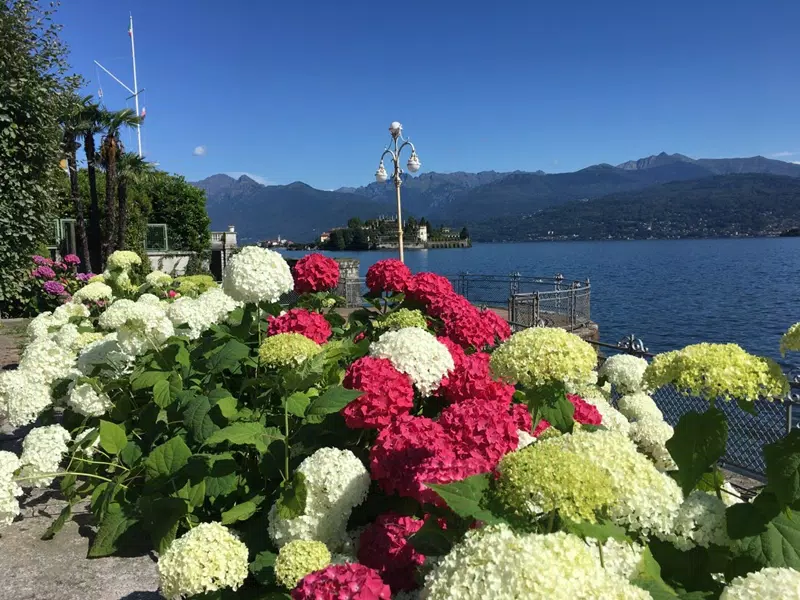
Hydrangea Planting and Care: A Comprehensive Guide
A comprehensive guide on planting and caring for hydrangeas, covering site selection, soil preparation, planting steps, watering, fertilising, pruning, and pest management.
Read MoreHydrangea aspera, commonly known as the rough-leaved hydrangea, is a striking and unique shrub that adds a bold statement to gardens. Known for its large, velvety leaves and distinctive lacecap flowers, this hydrangea species is perfect for gardeners looking to create a lush, tropical-inspired aesthetic. This guide provides an overview of its origins, care requirements, and popular varieties to help you decide if it’s the right choice for your garden.
Native to the Himalayan region, parts of China, and Southeast Asia, Hydrangea aspera thrives in temperate climates with high humidity and consistent rainfall. It has been cultivated in gardens worldwide for its distinctive appearance and ability to grow in shaded environments.
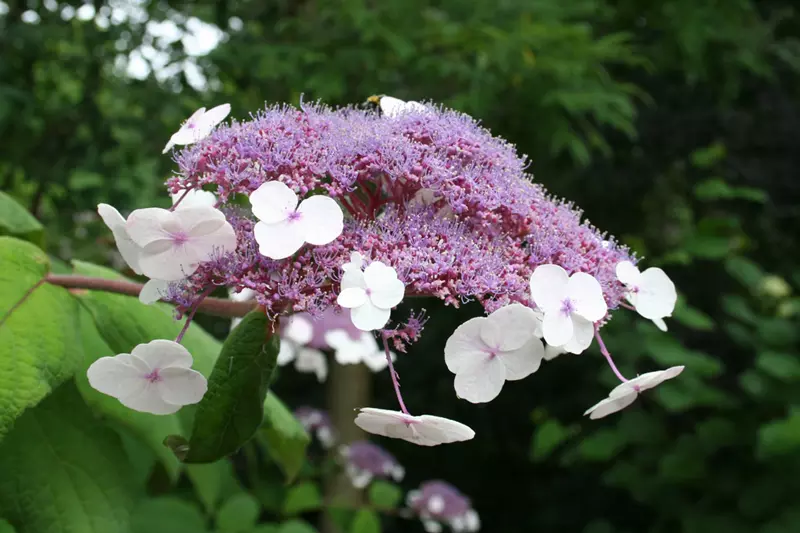
The rough-leaved hydrangea stands out among other species for its dramatic foliage and flowers. Here are its key features:
While Hydrangea aspera is relatively easy to grow, it requires specific conditions to thrive:
Prefers partial shade, making it ideal for woodland gardens or shaded borders. Avoid full sun in hot climates to prevent leaf scorch.
Thrives in fertile, well-draining soil with a slightly acidic to neutral pH (5.5–7). Enrich the soil with compost or organic matter for optimal growth.
Requires consistent moisture, particularly during dry periods. Ensure the soil remains damp but not waterlogged.
Hardy in USDA zones 7–9, Hydrangea aspera performs well in temperate climates with mild winters and moist summers.
Hydrangea aspera is an excellent choice for:
Several varieties of Hydrangea aspera are available, each with unique characteristics. Here are some of the most popular:
Known for its exceptionally large leaves and blue or purple lacecap flowers, this variety is perfect for creating a bold, tropical look.
Features smaller leaves and clusters of lavender and mauve flowers, adding a refined touch to woodland gardens.
A striking cultivar with soft, velvety foliage and large, lilac-pink flower heads. Its peeling bark adds winter interest.
Offers dark, chocolate-coloured stems and vibrant purple flowers, creating a dramatic contrast in the garden.
To keep your Hydrangea aspera healthy and vibrant, follow these care guidelines:
Hydrangea aspera is a bold and distinctive shrub that brings unique charm to shaded gardens and woodland landscapes. Its dramatic foliage, showy lacecap flowers, and peeling bark make it an excellent choice for gardeners seeking something extraordinary. With proper care and the right conditions, this stunning hydrangea will thrive and become a standout feature in your garden.
Hydrangea aspera, or the rough-leaved hydrangea, is a stunning addition to any garden with its large, velvety leaves and distinctive lacecap flowers. Proper planting is key to ensuring this shrub establishes well and thrives in its new home. This guide outlines the essential steps for planting Hydrangea aspera to maximise its health and beauty.
Before planting, take time to prepare both the plant and its new location to ensure success:
Hydrangea aspera prefers partial shade or dappled sunlight. Choose a location with:
Have these tools and materials ready:
Follow these steps to plant Hydrangea aspera successfully:
Water the plant generously after planting to help the soil settle and provide essential moisture for the roots.
Spread a 5–8 cm layer of organic mulch around the base of the plant, keeping it 5 cm away from the stem. Mulch retains soil moisture and regulates temperature.
Proper aftercare is essential to help your hydrangea establish and thrive:
Avoid these common pitfalls when planting Hydrangea aspera:
Planting Hydrangea aspera correctly is essential for its health and beauty. By hydrating the root ball, preparing the soil, and following these step-by-step instructions, you can give your hydrangea the best start. With proper care and attention, this striking shrub will thrive in your garden, providing lush foliage and stunning blooms for years to come.
The Rough-leaved hydrangea is a stunning shrub known for its velvety foliage and delicate lacecap flowers. Proper pruning is essential for maintaining its shape, promoting healthy growth, and encouraging vibrant blooms. This guide explains the best timing and techniques for pruning Hydrangea aspera to help it thrive.
Timing is critical when pruning Hydrangea aspera. To ensure optimal results, follow these guidelines:
Pruning in autumn is not recommended for Hydrangea aspera. Here’s why:
Follow these steps to prune your Hydrangea aspera effectively:
Examine the hydrangea for dead, damaged, or frost-affected branches. This initial inspection helps you determine what needs to be removed.
Use sharp pruning shears to cut back any dead or damaged branches to healthy wood. Make clean, angled cuts to prevent water from pooling on the cut surface.
Lightly trim the hydrangea to maintain its natural, bushy shape. Avoid excessive pruning to preserve the plant’s size and flowering potential.
Remove a few interior stems if the plant is overly dense. This improves airflow and light penetration, reducing the risk of fungal diseases.
Keep these tips in mind for successful pruning:
Avoid these common errors when pruning Hydrangea aspera:
Pruning Hydrangea aspera at the right time and with the proper techniques is essential for maintaining its health and beauty. By waiting until spring and focusing on light, strategic cuts, you can protect your plant from frost damage and ensure lush, vibrant growth. With consistent care and attention, your rough-leaved hydrangea will continue to be a standout feature in your garden.
Hydrangea aspera, also known as rough-leaved hydrangea, is a striking shrub with large, velvety leaves and distinctive lacecap flowers. For this plant to thrive, it’s crucial to provide the right soil conditions. This guide explores the ideal soil requirements for Hydrangea aspera, highlighting the role of mulching in maintaining soil health and supporting growth.
Hydrangea aspera is relatively adaptable but performs best in well-prepared soil. Here are its key requirements:
The ideal soil for rough-leaved hydrangea is:
The soil pH affects the plant's overall health and flower colour:
Enrich the soil with compost or well-rotted manure before planting to provide a strong nutrient base.
Mulching is a vital practice for maintaining healthy soil and ensuring the success of Hydrangea aspera. Here’s why mulching is essential:
Proper preparation ensures your hydrangea establishes well:
Use a soil test kit to check pH and nutrient levels. Adjust the pH with sulphur to increase acidity or lime to reduce it, if needed.
Mix compost, well-rotted manure, or leaf mould into the soil to improve fertility and drainage.
Break up compacted soil to a depth of 30–40 cm to allow roots to spread easily and absorb nutrients.
Keeping the soil healthy over time ensures the success of Hydrangea aspera. Follow these practices:
Address these common issues to maintain soil health:
Symptoms: Yellowing leaves and stunted growth due to waterlogged roots.
Solution: Amend the soil with sand or perlite to improve drainage, or plant in a raised bed.
Symptoms: Pale or discoloured leaves, weak stems, and reduced flowering.
Solution: Apply a balanced fertiliser and add organic matter to enrich the soil.
Providing the right soil conditions and incorporating mulching into your care routine are essential for the health and success of Hydrangea aspera. By preparing the soil, maintaining its quality, and applying mulch regularly, you can ensure this beautiful shrub thrives and enhances your garden for years to come.
The Hydrangea aspera is a striking addition to any garden with its velvety leaves and lacecap flowers. Propagation allows gardeners to expand their collection or share this unique shrub with others. This guide explores the most effective methods for propagating Hydrangea aspera, including cuttings, layering, and seed propagation.
Propagation is a rewarding way to grow new plants and offers several benefits:
Hydrangea aspera can be propagated using a variety of methods. Below are the most effective techniques:
Taking cuttings is a reliable way to produce new plants quickly and efficiently.
Layering allows the plant to develop roots while still attached to the parent, making it a low-risk method.
Growing Hydrangea aspera from seeds is less common but possible for those with patience.
Ensure success with these helpful tips:
Propagating Hydrangea aspera is a fulfilling way to expand your garden and enjoy the beauty of this unique plant. Whether you choose cuttings, layering, or seeds, each method has its advantages and challenges. With careful attention and patience, you can successfully grow new plants and enhance your garden with the distinctive charm of rough-leaved hydrangeas.
Hydrangea aspera, known for its stunning lacecap flowers and velvety foliage, is a hardy shrub that adds elegance to any garden. However, proper winter care is essential to ensure it remains healthy and resilient. This guide outlines the best practices for protecting your Hydrangea aspera during the colder months, focusing on mulching, pruning, and soil preparation.
Mulching is a crucial step in safeguarding your hydrangea against harsh winter conditions. A thick layer of mulch insulates the soil and protects the roots from extreme temperature fluctuations.
Pruning Hydrangea aspera in autumn may seem tempting, but it’s best to wait until spring. Leaving the plant intact through winter provides natural protection for its stems and buds.
Tip: When pruning in spring, wait until after the last frost to avoid exposing the plant to sudden cold snaps.
Healthy soil is the foundation of a resilient plant. Preparing the soil before winter strengthens Hydrangea aspera and enhances its ability to withstand cold weather.
Incorporate compost, well-rotted manure, or leaf mould into the soil around the plant. These materials improve soil structure, retain moisture, and provide essential nutrients.
Ensure the soil contains adequate levels of key nutrients:
Avoid waterlogged soil by amending heavy clay with sand or perlite. Good drainage prevents root rot and keeps the plant healthy.
In addition to mulching and soil preparation, these strategies can help protect your hydrangea during winter:
Avoid these pitfalls when preparing your Hydrangea aspera for winter:
Winter protection is essential for maintaining the health and beauty of Hydrangea aspera. By applying a thick layer of mulch, delaying pruning until spring, and enriching the soil with organic matter and essential nutrients, you can ensure your plant thrives even in the harshest conditions. With these simple yet effective strategies, your hydrangea will emerge strong and ready to flourish in spring.
Hydrangea aspera, with its velvety foliage and lacecap blooms, is a stunning addition to any garden. However, like all plants, it can be susceptible to various diseases. This article explores common and specific diseases that may affect Hydrangea aspera, along with preventative measures and effective treatments.
Understanding potential threats to your hydrangea is essential. Here are the most common diseases:
Symptoms: A white, powdery coating on leaves and stems, often leading to leaf curling and reduced plant vitality.
Causes: Warm, humid conditions combined with poor air circulation encourage this fungal disease.
Symptoms: Brown or black spots appear on the leaves, often surrounded by yellow halos. Severe infections may cause premature leaf drop.
Causes: Fungal pathogens spread via water splash during rain or overhead watering.
Symptoms: Yellowing leaves, wilting, and stunted growth. Roots appear dark and mushy.
Causes: Overwatering or poorly draining soil creates the ideal environment for fungal infections.
Symptoms: Grey mould develops on leaves, stems, or flowers, leading to decay.
Causes: High humidity and damp conditions promote this fungal disease.
Prevention is the first line of defence against diseases in Hydrangea aspera. Follow these tips to keep your plant healthy:
Prune your hydrangea lightly to thin out dense growth. This improves airflow and reduces humidity around the foliage, which discourages fungal growth.
Avoid overhead watering, which can spread fungal spores. Instead, water at the base of the plant early in the day to allow leaves to dry before nightfall.
Spread a 5–8 cm layer of organic mulch around the base of the plant. Mulch prevents water splashing onto the foliage and helps maintain consistent soil moisture.
Enrich the soil with compost to promote a robust root system. Well-draining soil reduces the risk of root rot.
Check your hydrangea frequently for early signs of disease. Prompt action can prevent small problems from escalating.
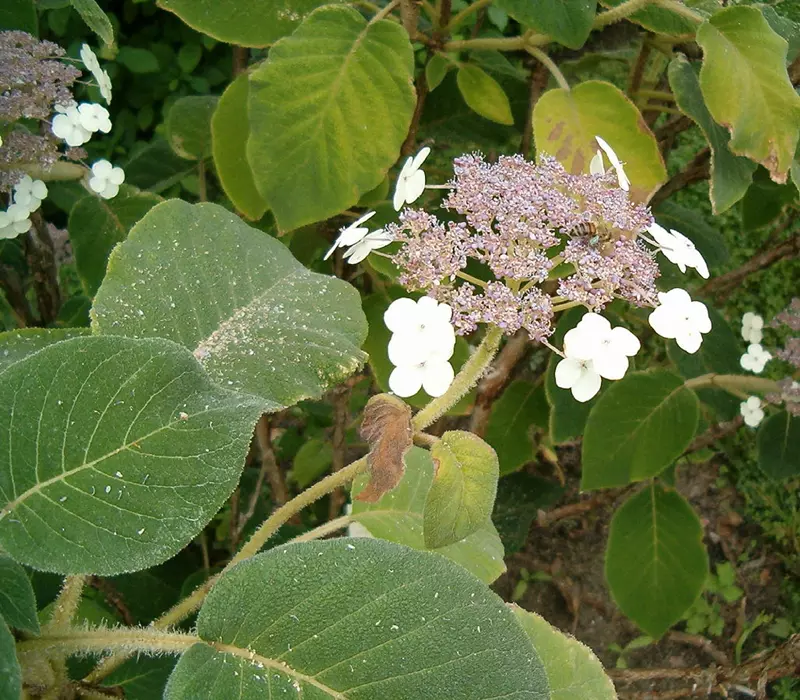
If your hydrangea develops a disease, act quickly to minimise damage. Here are organic and conventional treatment options:
To maintain the health of your Hydrangea aspera, adopt these long-term practices:
While Hydrangea aspera is a hardy and resilient shrub, it can still fall victim to diseases like powdery mildew, leaf spot, and root rot. By focusing on preventative measures such as proper watering, mulching, and regular inspections, you can significantly reduce the risk of disease. If problems arise, prompt treatment using organic or conventional methods will help restore your plant’s health. With consistent care, your hydrangea will thrive and continue to enhance your garden’s beauty.
Hydrangea aspera, known for its velvety leaves and striking lacecap flowers, is a resilient addition to any garden. However, pests such as aphids, spider mites, and slugs can pose a challenge to its health. Eco-friendly pest management provides effective solutions that protect your hydrangea without harming beneficial insects or the environment. This guide explores sustainable methods for keeping pests at bay.
Identifying common pests is the first step in effective management. Below are some pests that may affect your Hydrangea aspera:
Symptoms: Small, soft-bodied insects cluster on stems and leaves, secreting a sticky substance called honeydew that attracts sooty mould.
Prevention: Encourage natural predators such as ladybirds and lacewings to control aphid populations.
Symptoms: Fine webbing on leaves and stems, accompanied by yellow speckles or leaf drop.
Prevention: Maintain high humidity and regular watering to deter spider mites, which thrive in dry conditions.
Symptoms: Large, irregular holes in leaves, especially in damp, shaded areas.
Prevention: Reduce slug habitats by keeping the area around the plant clear of debris and maintaining proper drainage.
Sustainable gardening practices are key to effective pest management. Here are some eco-friendly techniques to protect your hydrangea:
Create a garden that supports natural predators like ladybirds, lacewings, and hoverflies. Plant nectar-rich flowers such as marigolds, yarrow, and dill nearby to attract these helpful insects.
A healthy plant is less susceptible to pest damage. Ensure proper watering, fertilising, and pruning to keep your Hydrangea aspera thriving.
Prevention is always better than cure. Adopt these strategies to reduce pest problems:
Sustainable pest control requires consistent effort and holistic practices:
Eco-friendly pest management is an effective and sustainable way to protect your Hydrangea aspera from common pests. By promoting natural predators, using organic sprays, and maintaining a healthy growing environment, you can keep your hydrangea pest-free while supporting the ecosystem. With consistent care and vigilance, your rough-leaved hydrangea will flourish as a vibrant and healthy feature in your garden.
Hydrangea aspera, with its velvety leaves and lacecap flowers, is a striking feature in any garden. Companion planting enhances its beauty and supports a thriving garden ecosystem. This guide explores the best companion plants and how to pair them with Hydrangea aspera for a harmonious landscape.
Companion planting provides aesthetic and practical advantages. Here’s how it benefits your Hydrangea aspera:
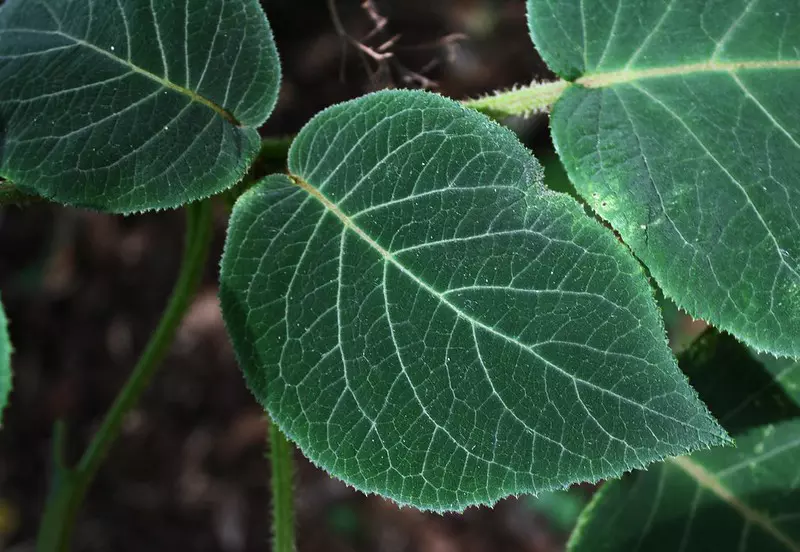
The ideal companions share similar growing conditions, such as partial shade and moist, well-draining soil. Consider the following:
Creative companion planting elevates your garden’s design. Try these ideas to make the most of Hydrangea aspera:
Combine hydrangeas with ferns, hostas, and wildflowers for a natural, woodland-inspired look. This setup mimics the plant’s native environment.
Place taller shrubs like rhododendrons at the back, hydrangeas in the middle, and ground covers at the front for a visually appealing layered effect.
Pair hydrangeas with plants that bloom in different seasons to maintain year-round colour and interest.
Use compact hydrangea varieties in containers and surround them with low-growing companions like liriope or ajuga for a cohesive display.
Proper care ensures all plants in your design thrive together. Follow these tips:
Companion planting with Hydrangea aspera enhances its natural beauty while supporting a thriving garden ecosystem. By carefully selecting plants that complement its growth habits and aesthetic qualities, you can create a visually stunning and healthy landscape. With proper care and thoughtful design, your hydrangea and its companions will flourish together, bringing year-round joy to your garden.
Hydrangea aspera, or the rough-leaved hydrangea, is a unique shrub that adds elegance and character to any garden. Its velvety leaves and delicate lacecap flowers make it a standout choice for gardeners seeking to create visually striking landscapes. This guide explores how to incorporate Hydrangea aspera into garden design for optimal aesthetic and functional appeal.

Hydrangea aspera is an excellent choice for garden design due to its unique features and versatility:
Strategic placement enhances the impact of Hydrangea aspera in your garden. Consider these options:
Mimic its native habitat by planting it alongside ferns, hostas, and wildflowers in a shaded or partially shaded woodland setting.
Place Hydrangea aspera as a middle layer in mixed borders, with taller trees or shrubs behind and ground covers in front for a layered effect.
Use it as a focal point in shaded corners or along pathways where its unique texture and flowers can be appreciated up close.
Smaller varieties like Hydrangea aspera ‘Sargentiana’ can be grown in large containers for patios or terraces.
Pairing Hydrangea aspera with the right plants enhances its visual appeal. Here are some ideal companions:
Hydrangea aspera provides year-round beauty:
The large lacecap flowers are the highlight, attracting pollinators and adding a soft, romantic charm.
The foliage takes on warm hues, creating a vibrant display as the blooms begin to fade.
The peeling bark of mature shrubs adds texture and interest to a winter landscape.
Proper care ensures your hydrangea thrives and remains a standout feature in your garden:
Hydrangea aspera is a versatile and elegant shrub that elevates any garden design. Whether used in woodland gardens, as a focal point, or in mixed borders, its unique texture and seasonal interest make it a standout choice. By pairing it with complementary plants and providing proper care, you can create a stunning and harmonious landscape that showcases the beauty of this exceptional hydrangea.

A comprehensive guide on planting and caring for hydrangeas, covering site selection, soil preparation, planting steps, watering, fertilising, pruning, and pest management.
Read More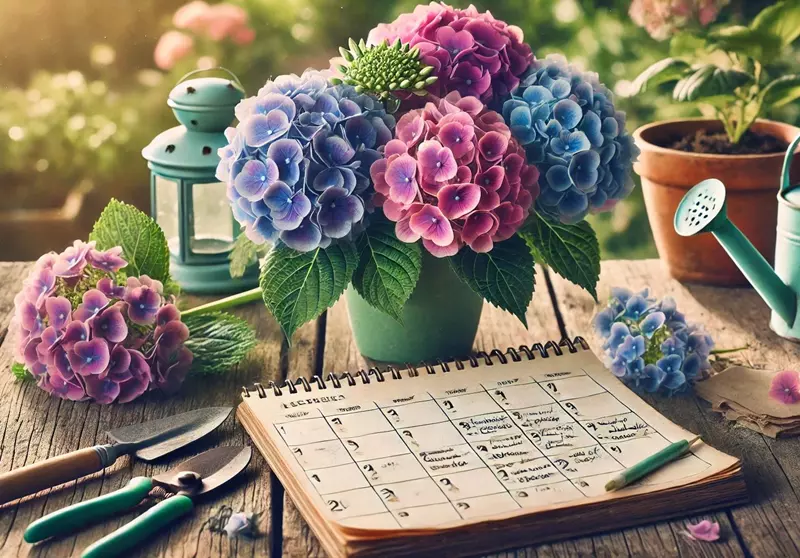
A comprehensive month-by-month hydrangea care calendar to ensure your plants thrive throughout the year.
Read More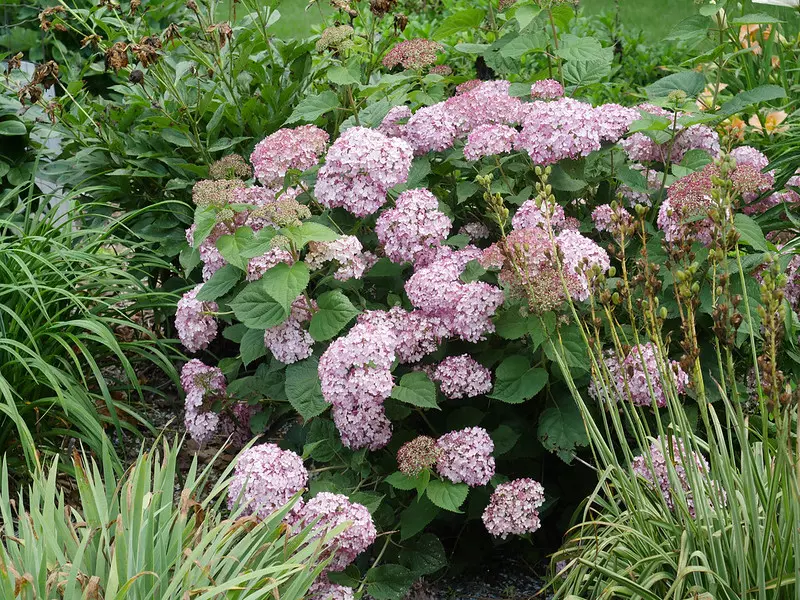
Discover what to plant with hydrangeas to create a thriving and visually stunning garden. Learn about the best companion plants and their benefits.
Read More